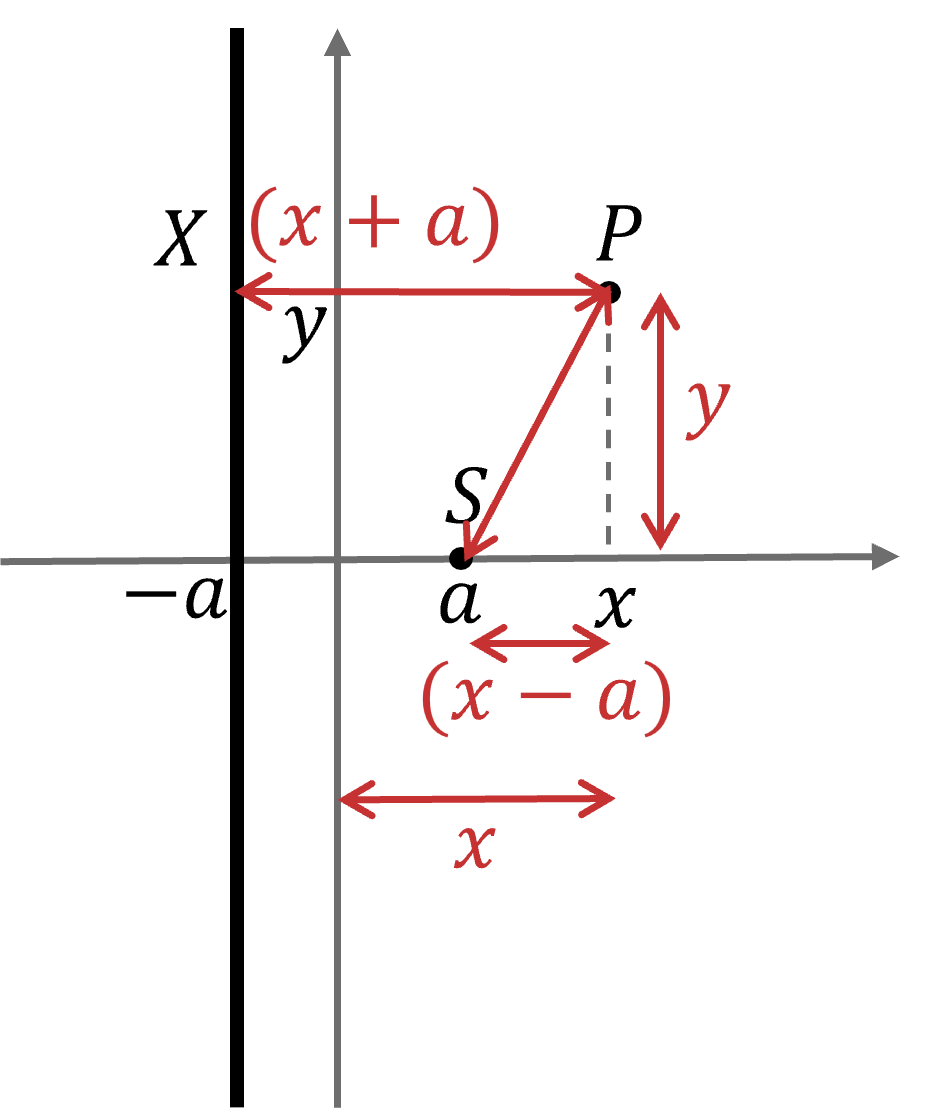The Parabola (Edexcel International A Level (IAL) Further Maths): Revision Note
Exam code: YFM01
The Equation of a Parabola
What is a parabola?
A parabola is a U-shaped quadratic curve with a line of symmetry
is a parabola
The line of symmetry is the
-axis
is a parabola
The line of symmetry is the
-axis
A parabola is part of a family of curves called the conics (or conic sections)
Conics are parabolae, hyperbolae and ellipses
What is the general equation of a parabola?

The general equation for a parabola is
in Cartesian form
in Parametric form
where
is a positive constant
The
-axis is the line of symmetry, as shown
The general equation can be rearranged
is the branch above the x-axis
is the branch below the x-axis
Examiner Tips and Tricks
You are given the Cartesian and parametric equations of a parabola in the Formulae Booklet.
Worked Example
A parabola has the parametric equations and
where
.
Show that its Cartesian equation is .
To find the Cartesian equation, eliminate from the parametric equations
It is easier to make the subject of
Substitute this into the equation for and simplify
Make the subject
The Focus & Directrix of a Parabola
What are the focus and directrix of a parabola?
The focus of the parabola
is the point
on the
-axis
The directrix is the vertical line
For example, the parabola
where
has
a focus at
the directrix
What is the focus-directrix property?
The focus-directrix property says that:
“Points on a parabola are the same distance from the focus as they are horizontally from the directrix”
In other words:
If S is the focus of a parabola
and P is any point on the parabola
and X is the point on the directrix horizontally from P
Then the distance PS equals PX
PS = PX
This property is an example of a locus of points
Examiner Tips and Tricks
You are given the focus and directrix of a parabola in the Formulae Booklet, but not the focus-directrix property.
Worked Example
The diagram shows the point , the vertical line
and a general point
that can move in the plane.

If is restricted to always be the same distance from
as it is horizontally from the vertical line, use coordinate geometry to prove that it must lie on the parabola
.
It helps to add the point X on to the diagram, on the line horizontally from P
The question says that PS = PX
The distance PS can be found using Pythagoras' theorem

The distance PX can be found from the diagram
Square PS = PX and substitute in the results above
Expand and simplify both sides
must lie on this curve

Unlock more, it's free!
Did this page help you?